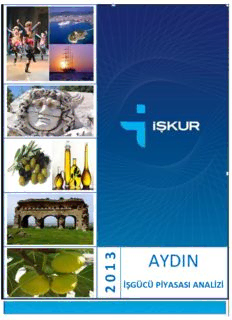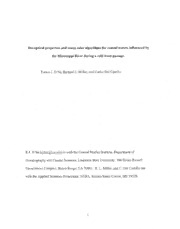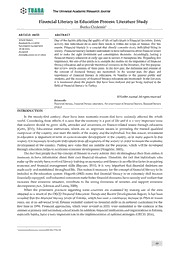
Bridge Engineering: Substructure Design (Principles and Applications in Engineering) PDF
Preview Bridge Engineering: Substructure Design (Principles and Applications in Engineering)
BRIDGE ENGINEERING Substructure Design EDITED BY Wai-Fah Chen Lian Duan CRC PR ESS Boca Raton London New York Washington, D.C. © 2003 by Taylor & Francis Group, LLC 1681_frame_FM Page iv Tuesday, January 21, 2003 2:04 PM The material in this book was first published in The Bridge Engineering Handbook, CRC Press, 2000. Library of Congress Cataloging-in-Publication Data Bridge engineering : substructure design / edited by Wai-Fah Chen and Lian Duan. p. cm. Includes bibliographical references and index. ISBN 0-8493-1681-2 (alk. paper) 1. Bridges—Foundations and piers—Design and construction. I. Chen, Wai-Fah, 1936- II. Duan, Lian. TG320 .B73 2003 624'.284—dc21 2002041117 This book contains information obtained from authentic and highly regarded sources. Reprinted material is quoted with permission, and sources are indicated. A wide variety of references are listed. Reasonable efforts have been made to publish reliable data and information, but the authors and the publisher cannot assume responsibility for the validity of all materials or for the consequences of their use. Neither this book nor any part may be reproduced or transmitted in any form or by any means, electronic or mechanical, including photocopying, microfilming, and recording, or by any information storage or retrieval system, without prior permission in writing from the publisher. All rights reserved. Authorization to photocopy items for internal or personal use, or the personal or internal use of specific clients, may be granted by CRC Press LLC, provided that $1.50 per page photocopied is paid directly to Copyright Clearance Center, 222 Rosewood Drive, Danvers, MA 01923 USA The fee code for users of the Transactional Reporting Service is ISBN 0-8493-1681-2/02/$0.00+$1.50. The fee is subject to change without notice. For organizations that have been granted a photocopy license by the CCC, a separate system of payment has been arranged. The consent of CRC Press LLC does not extend to copying for general distribution, for promotion, for creating new works, or for resale. Specific permission must be obtained in writing from CRC Press LLC for such copying. Direct all inquiries to CRC Press LLC, 2000 N.W. Corporate Blvd., Boca Raton, Florida 33431. Trademark Notice: Product or corporate names may be trademarks or registered trademarks, and are used only for identification and explanation, without intent to infringe. Visit the CRC Press Web site at www.crcpress.com © 2003 by CRC Press LLC No claim to original U.S. Government works International Standard Book Number 0-8493-1681-2 Library of Congress Card Number 2002041117 Printed in the United States of America 1 2 3 4 5 6 7 8 9 0 Printed on acid-free paper © 2003 by Taylor & Francis Group, LLC 1681_frame_FM Page v Tuesday, January 21, 2003 8:49 AM Foreword Among all engineering subjects, bridge engineering is probably the most difficult on which to compose a handbook because it encompasses various fields of arts and sciences. It not only requires knowledge and experience in bridge design and construction, but often involves social, economic, and political activities. Hence, I wish to congratulate the editors and authors for having conceived this thick volume and devoted the time and energy to complete it in such short order. Not only is it the first handbook of bridge engineering as far as I know, but it contains a wealth of information not previously available to bridge engineers. It embraces almost all facets of bridge engineering except the rudimentary analyses and actual field construction of bridge structures, members, and foundations. Of course, bridge engineering is such an immense subject that engineers will always have to go beyond a handbook for additional information and guidance. I may be somewhat biased in commenting on the background of the two editors, who both came from China, a country rich in the pioneering and design of ancient bridges and just beginning to catch up with the modern world in the science and technology of bridge engineering. It is particularly to the editors’ credit to have convinced and gathered so many internationally recognized bridge engineers to contribute chapters. At the same time, younger engineers have introduced new design and construction techniques into the treatise. This Handbook is divided into four volumes, namely: Superstructure Design Substructure Design Seismic Design Construction and Maintenance There are 67 chapters, beginning with bridge concepts and aesthestics, two areas only recently emphasized by bridge engineers. Some unusual features, such as rehabilitation, retrofit, and maintenance of bridges, are presented in great detail. The section devoted to seismic design includes soil-foundation-structure interaction. Another section describes and compares bridge engineering practices around the world. I am sure that these special areas will be brought up to date as the future of bridge engineering develops. May I advise each bridge engineer to have a desk copy of this volume with which to survey and examine both the breadth and depth of bridge engineering. T.Y. Lin Professor Emeritus, University of California at Berkeley Chairman, Lin Tung-Yen China, Inc. © 2003 by Taylor & Francis Group, LLC 1681_frame_FM Page vii Monday, January 20, 2003 12:14 PM Preface The Bridge Engineering Handbook is a unique, comprehensive, and the state-of-the-art reference work and resource book covering the major areas of bridge engineering with the theme “bridge to the 21st century.” It has been written with practicing bridge and structural engineers in mind. The ideal readers will be M.S.-level structural and bridge engineers with a need for a single reference source to keep abreast of new developments and the state-of-the-practice, as well as to review standard practices. The areas of bridge engineering include planning, analysis and design, construction, maintenance, and rehabilitation. To provide engineers a well-organized and user-friendly, easy to follow resource, the Handbook is divided into four volumes: I, Superstructure Design II, Substructure Design III, Seismic Design, and IV, Construction and Maintenance. Volume II: Substructure Design addresses the various substructure components: bearings, piers and columns, towers, abutments and retaining structures, geotechnical considerations, footing and founda- tions, vessel collisions, and bridge hydraulics. The Handbook stresses professional applications and practical solutions. Emphasis has been placed on ready-to-use materials. It contains many formulas and tables that give immediate answers to questions arising from practical work. It describes the basic concepts and assumptions omitting the derivations of formulas and theories. It covers traditional and new, innovative practices. An overview of the structure, organization, and content of the book can be seen by examining the table of contents presented at the beginning of the book while an in-depth view of a particular subject can be seen by examining the individual table of contents preceding each chapter. References at the end of each chapter can be consulted for more detailed studies. The chapters have been written by many internationally known authors from different countries covering bridge engineering practices and research and development in North America, Europe, and the Pacific Rim. This Handbook may provide a glimpse of a rapid global economy trend in recent years toward international outsourcing of practice and competition in all dimensions of engineering. In general, the Handbook is aimed toward the needs of practicing engineers, but materials may be reorganized to accommodate undergraduate and graduate level bridge courses. The book may also be used as a survey of the practice of bridge engineering around the world. The authors acknowledge with thanks the comments, suggestions, and recommendations during the development of the Handbook, by Fritz Leonhardt, Professor Emeritus, Stuttgart University, Germany; Shouji Toma, Professor, Horrai-Gakuen University, Japan; Gerard F. Fox, Consulting Engineer; Jackson L. Kurkee, Consulting Engineer; Michael J. Abrahams, Senior Vice President; Parsons Brinckerhoff Quade & Douglas, Inc.; Ben C. Gerwick Jr., Professor Emeritus, University of California at Berkeley; Gregory F. Fenves, Professor, University of California at Berkeley; John M. Kulicki, President and Chief Engineer, Modjeski and Masters; James Chai, Supervising Transportation Engineer, California Department of Transportation; Jinron Wang, Senior Bridge Engineer, California Department of Transportation; and David W. Liu, Principal, Imbsen & Associates, Inc. Wai-Fah Chen Lian Duan © 2003 by Taylor & Francis Group, LLC 1681_frame_FM Page ix Monday, January 20, 2003 12:14 PM Editors Wai-Fah Chen is presently Dean of the College of Engineering at the University of Hawaii. He was a George E. Goodwin Distin- guished Professor of Civil Engineering and Head of the Department of Structural Engineering at Purdue University from 1976 to 1999. He received his B.S. in civil engineering from the National Cheng-Kung University, Taiwan in 1959; M.S. in structural engi- neering from Lehigh University, Pennsylvania in 1963; and Ph.D. in solid mechanics from Brown University, Rhode Island in 1966. He received the Distinguished Alumnus Award from the National Cheng-Kung University in 1988 and the Distinguished Engineering Alumnus Medal from Brown University in 1999. Dr. Chen’s research interests cover several areas, including con- stitutive modeling of engineering materials, soil and concrete plas- ticity, structural connections, and structural stability. He is the recipient of several national engineering awards, including the Ray- mond Reese Research Prize and the Shortridge Hardesty Award, both from the American Society of Civil Engineers, and the T. R. Higgins Lectureship Award from the American Institute of Steel Construction. In 1995, he was elected to the U.S. National Academy of Engineering. In 1997, he was awarded Honorary Membership by the American Society of Civil Engineers. In 1998, he was elected to the Academia Sinica (National Academy of Science) in Taiwan. A widely respected author, Dr. Chen authored and coauthored more than 20 engineering books and 500 technical papers. His books include several classical works such as Limit Analysis and Soil Plasticity (Elsevier, 1975), the two-volume Theory of Beam-Columns (McGraw-Hill, 1976–77), Plasticity in Rein- forced Concrete (McGraw-Hill, 1982), and the two-volume Constitutive Equations for Engineering Materials (Elsevier, 1994). He currently serves on the editorial boards of more than 10 technical journals. He has been listed in more than 20 Who’s Who publications. Dr. Chen is the editor-in-chief for the popular 1995 Civil Engineering Handbook (CRC Press), the 1997 Handbook of Structural Engineering (CRC Press), and the 2000 Bridge Engineering Handbook (CRC Press). He currently serves as the consulting editor for McGraw-Hill’s Encyclopedia of Science and Technology. He has been a longtime member of the Executive Committee of the Structural Stability Research Council and the Specification Committee of the American Institute of Steel Construction. He has been a consultant for Exxon Production Research on offshore structures; for Skidmore, Owings & Merrill in Chicago on tall steel buildings; and for the World Bank on the Chinese University Development Projects, among many others. Dr. Chen has taught at Lehigh University, Purdue University, and the University of Hawaii. © 2003 by Taylor & Francis Group, LLC 1681_frame_FM Page x Monday, January 20, 2003 12:14 PM Lian Duan is a Senior Bridge Engineer with the California Depart- ment of Transportation (Caltrans) and Professor of Structural Engineering at Taiyuan University of Technology, China. He received his B.S. in civil engineering in 1975 and his M.S. in structural engineering in 1981 from Taiyuan University of Tech- nology. He received his Ph.D. in structural engineering from Pur- due University, West Lafayette, Indiana in 1990. Dr. Duan worked at the Northeastern China Power Design Institute from 1975 to 1978. His research interests include inelastic behavior of reinforced concrete and steel structures, structural stability, and seismic bridge analysis and design. Dr. Duan has authored or coauthored more than 60 papers, chapters, ad reports; his research focuses on the development of unified interaction equations for steel beam columns, flexural stiffness of reinforced concrete members, effective length factors of compression members, and design of bridge structures. Dr. Duan is an esteemed practicing engineer and is registered as a P.E. in California. He has designed numerous building and bridge structures. He was lead engineer for the development of the seismic retrofit design criteria for the San Francisco-Oakland Bay Bridge west spans and made significant contributions to this project. He is coeditor of the Structural Engineering Handbook CRCnetBase 2000 (CRC Press, 2000) and The Bridge Engineering Handbook (CRC Press, 2000), winner of Choice magazine’s Outstanding Academic Title Award for 2000. Dr. Duan received the ASCE 2001 Arthur M. Wellington Prize for his paper “Section Properties for Latticed Members of the San Francisco-Oakland Bay Bridge.” He currently serves as Caltrans Structural Steel Committee Chairman and is a member of the Transportation Research Board A2CO2 Steel Bridge Committee. x © 2003 by Taylor & Francis Group, LLC 1681_frame_FM Page xi Monday, January 20, 2003 12:14 PM Contributors James Chai Johnny Feng Charles Seim California Department of J. Muller International, Inc. T. Y. Lin International Transportation Sacramento, California San Francisco, California Sacramento, California Chao Gong Jim Springer Hong Chen ICF Kaiser Engineers California Department of J. Muller International, Inc. Oakland, California Transportation San Diego, California Sacramento, California Michael Knott Wai-Fah Chen Moffatt & Nichol Engineers Jinrong Wang University of Hawaii at Manoa Richmond, Virginia California Department of Honolulu, Hawaii Transportation Youzhi Ma Sacramento, California Nan Deng Geomatrix Consultants, Inc. Bechtel Corporation Oakland, California Linan Wang San Francisco, California California Department of Thomas W. McNeilan Transportation Lian Duan Fugro West, Inc. Sacramento, California California Department of Ventura, California Transportation Ke Zhou Sacramento, California Zolan Prucz California Department of Modjeski and Masters, Inc. Transportation New Orleans, Louisiana Sacramento, California © 2003 by Taylor & Francis Group, LLC 1681_frame_FM Page xiii Monday, January 20, 2003 12:14 PM Contents 1 Bearings Johnny Feng and Hong Chen 1.1 Introduction.............................................................................................................................1-1 1.2 Types of Bearings.....................................................................................................................1-1 1.3 Selection of Bearings................................................................................................................1-5 1.4 Design of Elastomeric Bearings...............................................................................................1-7 2 Piers and Columns Jinrong Wang 2.1 Introduction.............................................................................................................................2-1 2.2 Structural Types.......................................................................................................................2-1 2.3 Design Loads............................................................................................................................2-4 2.4 Design Criteria.........................................................................................................................2-7 3 Towers Charles Seim 3.1 Introduction.............................................................................................................................3-1 3.2 Functions..................................................................................................................................3-2 3.3 Aesthetics..................................................................................................................................3-2 3.4 Conceptual Design...................................................................................................................3-4 3.5 Final Design............................................................................................................................3-11 3.6 Construction..........................................................................................................................3-14 3.7 Summary................................................................................................................................3-15 4 Abutments and Retaining Structures Linan Wang and Chao Gong 4.1 Introduction.............................................................................................................................4-1 4.2 Abutments................................................................................................................................4-1 4.3 Retaining Structures...............................................................................................................4-22 5 Geotechnical Considerations Thomas W. McNeilan and James Chai 5.1 Introduction.............................................................................................................................5-1 5.2 Field Exploration Techniques.................................................................................................5-2 5.3 Defining Site Investigation Requirements............................................................................5-15 5.4 Development of Laboratory Testing Program.....................................................................5-17 5.5 Data Presentation and Site Characterization........................................................................5-19 6 Shallow Foundations James Chai 6.1 Introduction.............................................................................................................................6-1 6.2 Design Requirements...............................................................................................................6-2 © 2003 by Taylor & Francis Group, LLC 1681_frame_FM Page xiv Monday, January 20, 2003 12:50 PM 6.3 Failure Modes of Shallow Foundations..................................................................................6-3 6.4 Bearing Capacity for Shallow Foundations............................................................................6-3 6.5 Stress Distribution Due to Footing Pressures.......................................................................6-14 6.6 Settlement of Shallow Foundations......................................................................................6-17 6.7 Shallow Foundations on Rock...............................................................................................6-28 6.8 Structural Design of Spread Footings...................................................................................6-30 7 Deep Foundations Youzhi Ma and Nan Deng 7.1 Introduction.............................................................................................................................7-1 7.2 Classification and Selection.....................................................................................................7-2 7.3 Design Considerations...........................................................................................................7-10 7.4 Axial Capacity and Settlement — Individual Foundation..................................................7-14 7.5 Lateral Capacity and Deflection — Individual Foundation................................................7-25 7.6 Grouped Foundations............................................................................................................7-34 7.7 Seismic Design........................................................................................................................7-38 8 Effective Length of Compression Members Lian Duan and Wai-Fah Chen 8.1 Introduction.............................................................................................................................8-1 8.2 Isolated Columns.....................................................................................................................8-2 8.3 Framed Columns — Alignment Chart Method.....................................................................8-3 8.4 Modifications to Alignment Charts........................................................................................8-8 8.5 Framed Columns — Alternative Methods...........................................................................8-13 8.6 Crossing Bracing Systems......................................................................................................8-16 8.7 Latticed and Built-Up Members...........................................................................................8-17 8.8 Tapered Columns...................................................................................................................8-20 8.9 Summary................................................................................................................................8-20 9 Vessel Collision Design of Bridges Michael Knott and Zolan Prucz 9.1 Introduction.............................................................................................................................9-2 9.2 Initial Planning.........................................................................................................................9-4 9.3 Waterway Characteristics........................................................................................................9-6 9.4 Vessel Traffic Characteristics...................................................................................................9-6 9.5 Collision Risk Analysis.............................................................................................................9-8 9.6 Vessel Impact Loads...............................................................................................................9-10 9.7 Bridge Analysis and Design...................................................................................................9-14 9.8 Bridge Protection Measures...................................................................................................9-15 9.9 Conclusions............................................................................................................................9-16 10 Bridge Hydraulics Jim Springer and Ke Zhou 10.1 Introduction...........................................................................................................................10-1 10.2 Bridge Hydrology and Hydraulics.........................................................................................10-1 10.3 Bridge Scour.........................................................................................................................10-11 xiv © 2003 by Taylor & Francis Group, LLC
The list of books you might like

The 5 Second Rule: Transform your Life, Work, and Confidence with Everyday Courage

Haunting Adeline

$100m Offers

The 48 Laws of Power

Ernst Heiss - Bibliographie, Liste der beschriebenen und dedizierten Taxa1

Plan 2 CS Generator

by Christopher Gardner-Thorpe. Page 55 - Evolve360

Sociological Forum 2006: Vol 21 Index

Appalachian Regional Commission

Flat-Coated Retriever

Büchi’s Monadic Second Order Successor Arithmetic

Gorgeous George: The Outrageous Bad-Boy Wrestler Who Created American Pop Culture

Troubled Blood

The Auburn Circle Spring 2006

The Pegasus 2006

Éléments essentiels du programme d'adaptation scolaire destiné aux élèves aveugles ou ayant des déficiences visuelles

Greek Government Gazette: Part 4, 2006 no. 114

NATYACHANVAR

Greek Government Gazette: Part 3, 2006 no. 365





